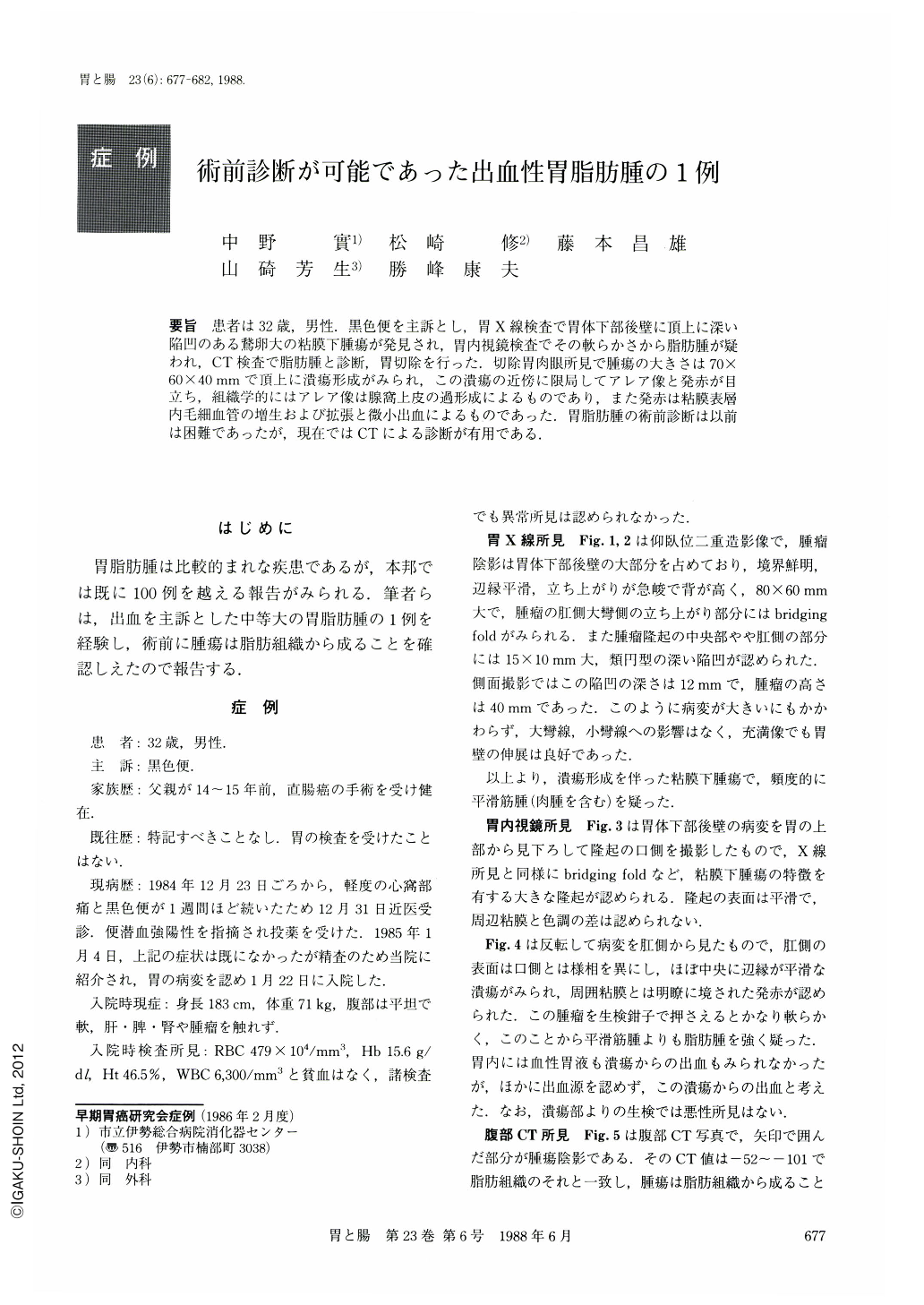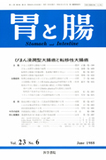Japanese
English
- 有料閲覧
- Abstract 文献概要
- 1ページ目 Look Inside
- サイト内被引用 Cited by
要旨 患者は32歳,男性.黒色便を主訴とし,胃X線検査で胃体下部後壁に頂上に深い陥凹のある鵞卵大の粘膜下腫瘍が発見され,胃内視鏡検査でその軟らかさから脂肪腫が疑われ,CT検査で脂肪腫と診断,胃切除を行った.切除胃肉眼所見で腫瘍の大きさは70×60×40mmで頂上に潰瘍形成がみられ,この潰瘍の近傍に限局してアレア像と発赤が目立ち,組織学的にはアレア像は腺窩上皮の過形成によるものであり,また発赤は粘膜表層内毛細血管の増生および拡張と微小出血によるものであった.胃脂肪腫の術前診断は以前は困難であったが,現在ではCTによる診断が有用である.
A 32-year-old man visited our hospital because of tarry stool on Jan. 4, 1985. Double contrast picture in the supine position revealed a large ovoid mass with smooth border ulcerated centrally and bridging folds reaching from the posterior wall of the lower part in the gastric body (Figs. 1 and 2). Endoscopic examination also revealed this large submucosal mass which was clearly circumscribed, smooth-bordered, and had central ulceration. The ulceration was surrounded by reddening with sharp demarcation (Figs. 3 and 4). The overlying mucosa was easily retractable with the biopsy forceps (“tenting sign”) and also the tumor mass was fairly soft by compression of the biopsy forceps. Based on these findings, gastric lipoma was highly suspected.
Biopsy specimens showed no malignant tumor cells. CT scan revealed a low attenuation (- 52 to - 101 HU) mass in the posterior wall of the stomach, indicating that the mass was composed of fat (Fig. 5). Consequently, partial gastrectomy was performed on Jan. 29, 1985. Resected specimen of the stomach showed large smooth mass (70×60 ×40 mm in size) with central ulceration (Fig. 6). The mucosal surface around the ulceration showed granular pattern and reddening. Histological study of granular portion showed foveolar hyperplasia (Fig. 9), and that of reddening, dilated capillary proliferation (Fig. 10). Granulation tissue and fibrosis were observed in the ulcer bottom (Fig. 11). Tumor itself was made of mature adipose tissue (Fig. 12).
Gastric lipoma is a rare benign tumor, and therefore, accurate diagnosis is often difficult preoperatively. However, gastrointestinal barium studies and endoscopic examinations yielded helpful information, while CT scan, definitive diagnostic data in this case. Thus, CT scan may well become a definitive diagnostic method for lipomas of the gastrointestinal tract.

Copyright © 1988, Igaku-Shoin Ltd. All rights reserved.


